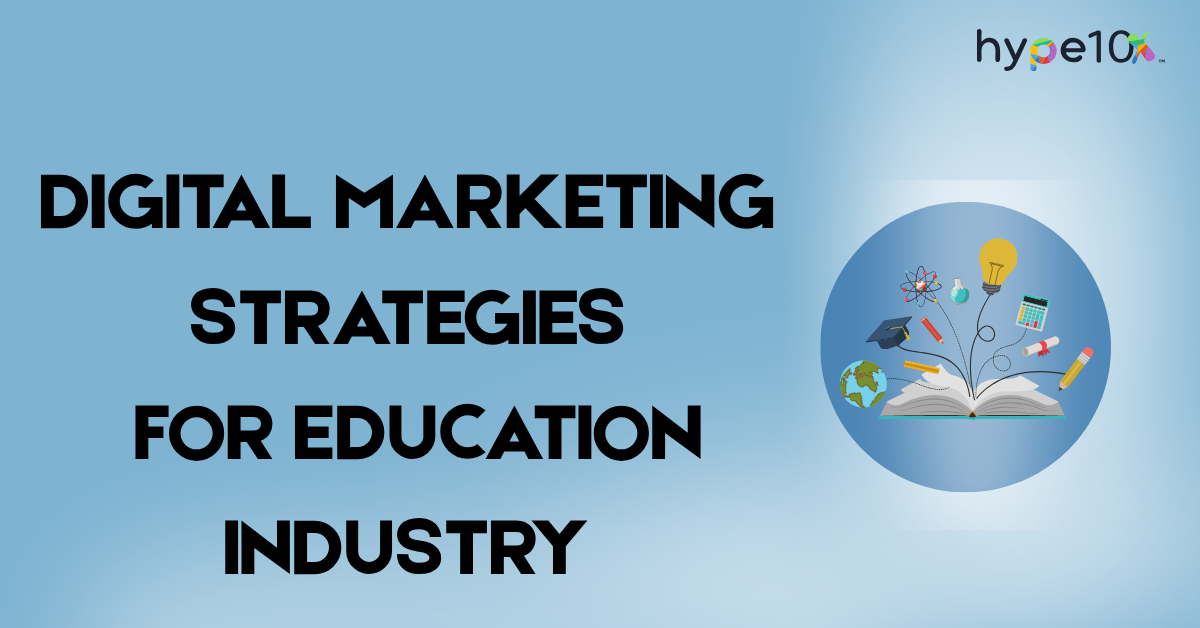Introduction
The way Google Ads works has changed more in the last three years than it did in the previous decade. Automation is now at the core, AI decides which ads win auctions, and privacy updates have reshaped how marketers collect and use data. On top of that, users have become smarter. They expect fast, personalized experiences and often rely on voice assistants or zero-click answers before making decisions.
For marketers, agencies, and business owners, this shift means one thing: the old playbook won’t work anymore. To stay competitive, you need strategies that align with where Google Ads is headed, not where it’s been.
In this article, you’ll learn 10 powerful Google Ads marketing strategies for 2026 that focus on smarter targeting, better creative, and data-driven decisions. Whether you’re running ads for your own business or managing multiple client accounts, these tips will help you keep your campaigns future-ready and efficient.
Voice search is rapidly changing the digital advertising landscape. To help you navigate this shift and optimize your campaigns, I’ve put together a comprehensive guide on voice search marketing strategies —read the full article here: Voice Search Marketing Guide. For official documentation, troubleshooting, and general support related to your campaigns, you can always check the Google Ads Help Center .
👉 Let’s dive into the strategies that will define successful Google Ads campaigns in 2026.
1.Prioritize High-Intent Keywords Over Volume:
In 2026, focusing on high-intent keywords is more crucial than simply chasing keyword volume. With rapid advancements in AI, search engines are getting far better at discerning what searchers actually want—moving beyond matching keywords to matching genuine user intent. For marketers, this means that targeting transactional keywords (like “buy running shoes online” or “get SEO service pricing”) delivers visitors who are primed to act, rather than just browse. In contrast, informational keywords (such as “how to care for leather shoes” or “best SEO tips for beginners”) bring in users looking to learn, not necessarily buy right away.
This intent-over-volume approach is even more vital as AI-powered assistants handle a greater share of broad, generic search queries, often surfacing answers directly or providing quick snippets. Generic, high-volume searches are increasingly answered by AI within the search interface, which means marketers relying on these will see declining click-through rates and fewer conversions. This ties into the rise of zero-click content, where users receive answers right on the search results page without clicking through to websites. While this reduces website traffic from informational queries, optimizing for zero-click content can boost brand authority and visibility on the SERP itself. Prioritizing high-intent, action-oriented keywords puts campaigns in front of those ready to engage and convert—making every click more valuable and future-proofing ROI as search evolves in the age of automation.
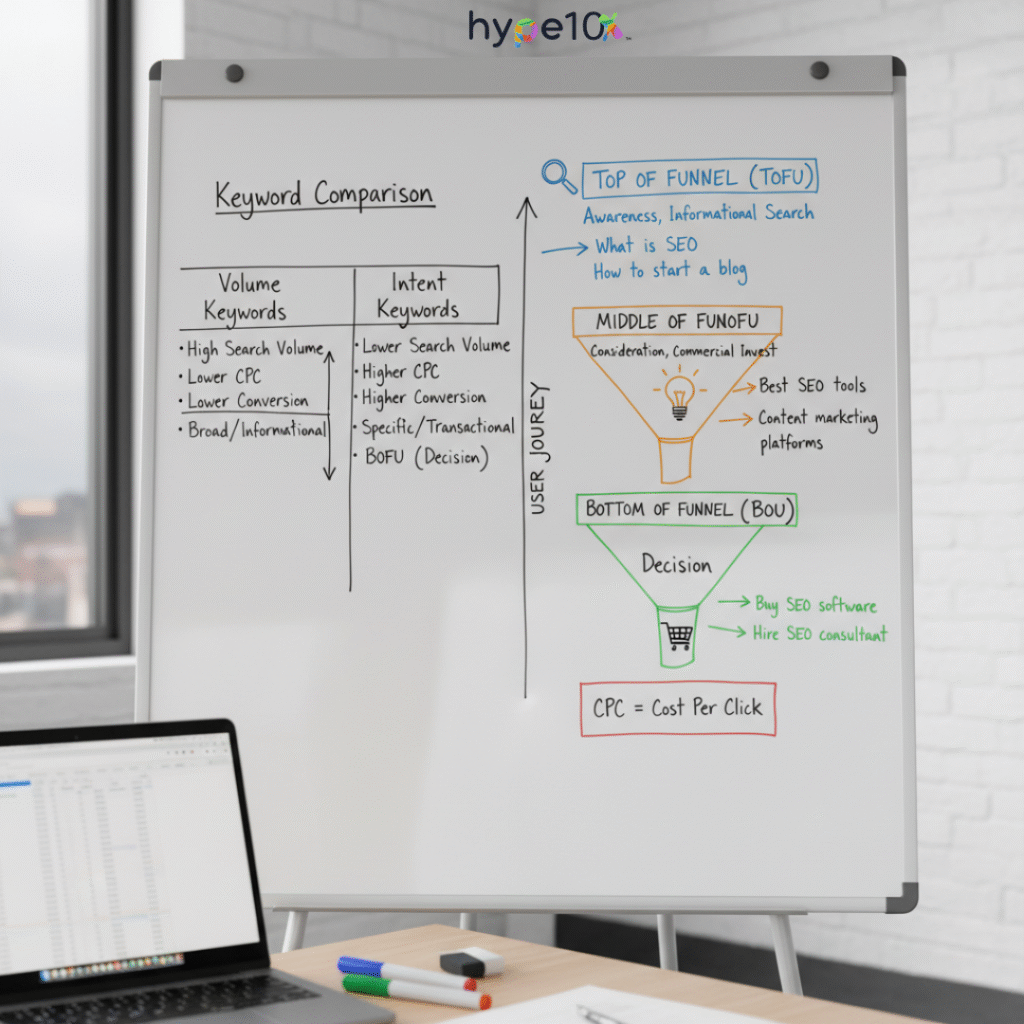
2.Build Campaign Structures Around Themes
Most advertisers make a critical mistake when organizing their Google Ads campaigns—they dump dozens of vaguely related keywords into massive ad groups, hoping something sticks. This scattered approach kills your Quality Score and wastes budget.
Instead, structure your campaigns around focused themes that mirror how people actually search. Start with problem-based themes that address specific pain points. Rather than a generic “plumbing” ad group, create targeted groups like “water heater not heating” or “toilet won’t stop running.” Someone with a flooding basement needs different messaging than someone researching routine maintenance.
Solution-based themes work equally well, especially for service businesses. Group keywords around specific offerings like “same-day drain cleaning” or “trenchless sewer repair.” This lets you write ads that speak directly to what you’re offering, not generic service descriptions.
For local businesses, Location themes are essential. “Emergency plumber Brooklyn” deserves different messaging than “plumber Upper East Side”—even if you serve both areas. Local searchers want confirmation you understand their neighborhood.
This themed approach naturally improves Quality Score because everything aligns—your keywords, ads, and landing pages all focus on the same specific intent. When relevance increases, click-through rates follow, costs drop, and conversions improve. Stop throwing keywords at the wall. Build intentional themes that match real search behavior.
3.Leverage AI-Powered Responsive Search Ads
Responsive Search Ads aren’t just popular in 2026—they’re your only option. Google retired traditional text ads, and honestly, RSAs deliver better results anyway. The AI tests different combinations of your headlines and descriptions, figuring out what actually makes people click.
Why RSAs work so well: Google’s machine learning watches how people interact with your ads and adjusts on the fly. Someone searching on mobile at lunch gets a different version than someone researching on desktop at work. This kind of personalization is impossible to do manually.
Writing great headlines: Give Google 10-15 headlines to work with, and make them genuinely different. Don’t just rephrase the same thing five times. Mix in your pricing, what makes you special, why someone should act now, and what past customers love about you. Sprinkle keywords into a few headlines, but write for humans first.
Go easy on pinning: I know it’s tempting to control exactly what shows where, but resist. Only pin things that absolutely must appear, like your company name or a required disclaimer. The more you pin, the less the AI can optimize. Trust the system—that’s the whole point.
Give it time: Your RSAs need a few weeks to learn what works. Check those asset ratings regularly and swap out anything labeled “Low.” The AI gets smarter the longer it runs, so be patient with new campaigns.
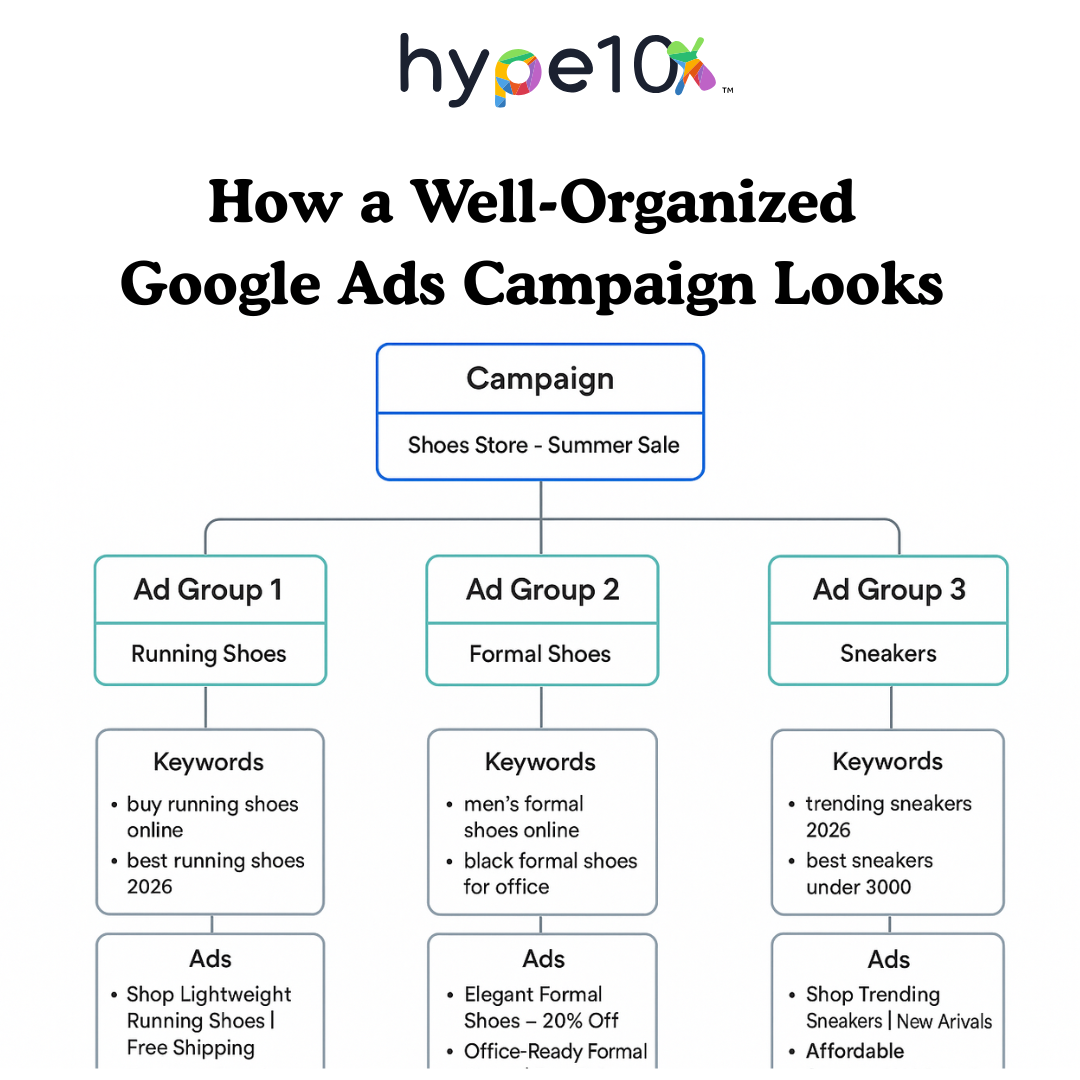
4.Optimize Landing Pages for Speed & Personalization
Your landing page can make or break your entire campaign. Someone clicks your ad, waits three seconds for your page to load, and they’re gone. Game over.
Core Web Vitals matter more than ever: Google’s been serious about page speed since 2021, but in 2026 it directly impacts your Quality Score and ad costs. Focus on Largest Contentful Paint (how fast your main content loads), First Input Delay (how quickly buttons respond), and Cumulative Layout Shift (whether your page jumps around while loading). Aim for under 2.5 seconds on mobile. Test your pages with Google PageSpeed Insights to see exactly where you’re losing time. Compress images, minimize JavaScript, and use a solid hosting provider.
Personalization drives conversions: Match your landing page to what people searched for. If someone clicked an ad about “affordable wedding photography,” don’t send them to your generic homepage. Create dynamic pages that mirror ad messaging—swap headlines, images, and calls-to-action based on which ad group they came from. Use UTM parameters to trigger different content versions.
The conversion impact is real: A one-second delay in page load can drop conversions by 7%. But personalized landing pages? They can boost conversion rates by 30-40%. When someone sees exactly what they expected after clicking, they trust you more and buy faster. It’s that simple.
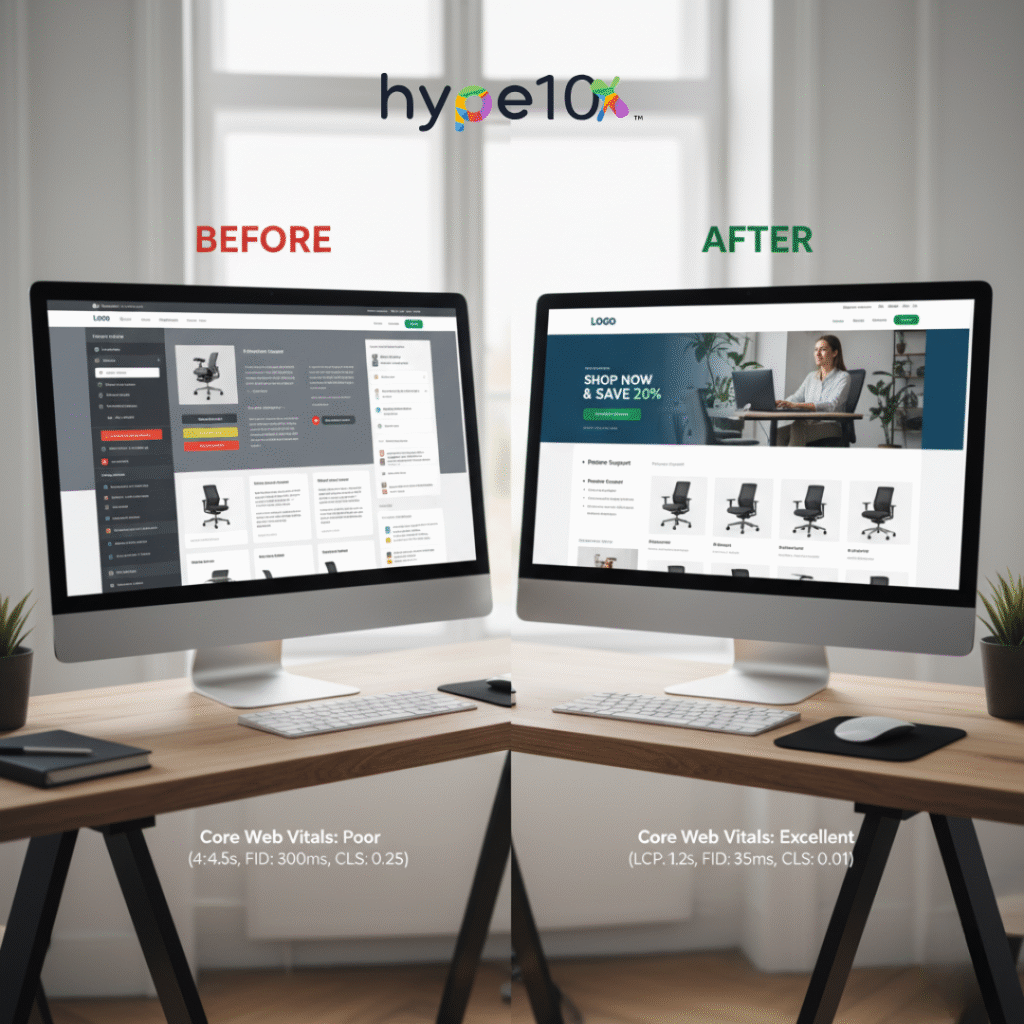
5. Go Deep with Audience Targeting & First-Party Data
Third-party cookies are basically dead in 2026, and that’s actually pushed advertisers to get smarter. Your own customer data is now your biggest competitive advantage.
First-party data is everything: Start collecting emails, phone numbers, and user behavior from your website. This information is gold because you own it and it’s accurate. Upload your customer lists to Google Ads through Customer Match—target people who’ve already bought from you with upsell offers, or exclude them from acquisition campaigns to save budget.
Build audiences that actually convert: GA4 audiences let you target based on real behavior. Someone who visited your pricing page three times but didn’t convert? That’s a hot lead worth targeting. People who spent five minutes reading your blog? They’re engaged and warming up. Remarketing lists still work incredibly well—just make sure you’re segmenting by behavior, not just “visited the site.”
Layer for precision: Here’s where it gets powerful: combine audience targeting with your keywords. Bid higher when someone searching “project management software” is also on your remarketing list. Lower bids for cold traffic. This layering approach can cut your cost-per-acquisition in half while improving conversion rates by 50% or more. You’re not just reaching people searching the right terms—you’re reaching the right people searching the right terms.
6. Maximize Ad Extensions and Assets
If you’re running search ads without extensions, you’re leaving money on the table. Extensions make your ads bigger, more useful, and way more clickable.
Use every relevant extension: Sitelinks give people shortcuts to specific pages—your pricing, testimonials, contact form, or product categories. Structured snippets highlight your services or product types in a scannable list. Callouts let you shout about free shipping, 24/7 support, or price matching. Lead form extensions capture emails right in the ad without anyone leaving Google. Image assets add visual appeal that makes your ad pop against text-only competitors.
Why they matter for performance: Extensions can boost your click-through rate by 10-25%. But here’s the kicker—they also improve your Ad Rank, which means better positions at lower costs. Google rewards ads that take up more space and provide more value to searchers.
What a fully loaded ad looks like: Imagine someone searches “CRM software.” Your ad shows the headline and description, plus four sitelinks (Pricing, Free Trial, Integrations, Case Studies), callouts highlighting “No Credit Card Required • 99.9% Uptime • Award-Winning Support,” structured snippets listing your features, and an image of your dashboard. That ad dominates the search results and builds instant credibility. Load up every ad group with relevant extensions—it’s the easiest performance boost you’ll get.
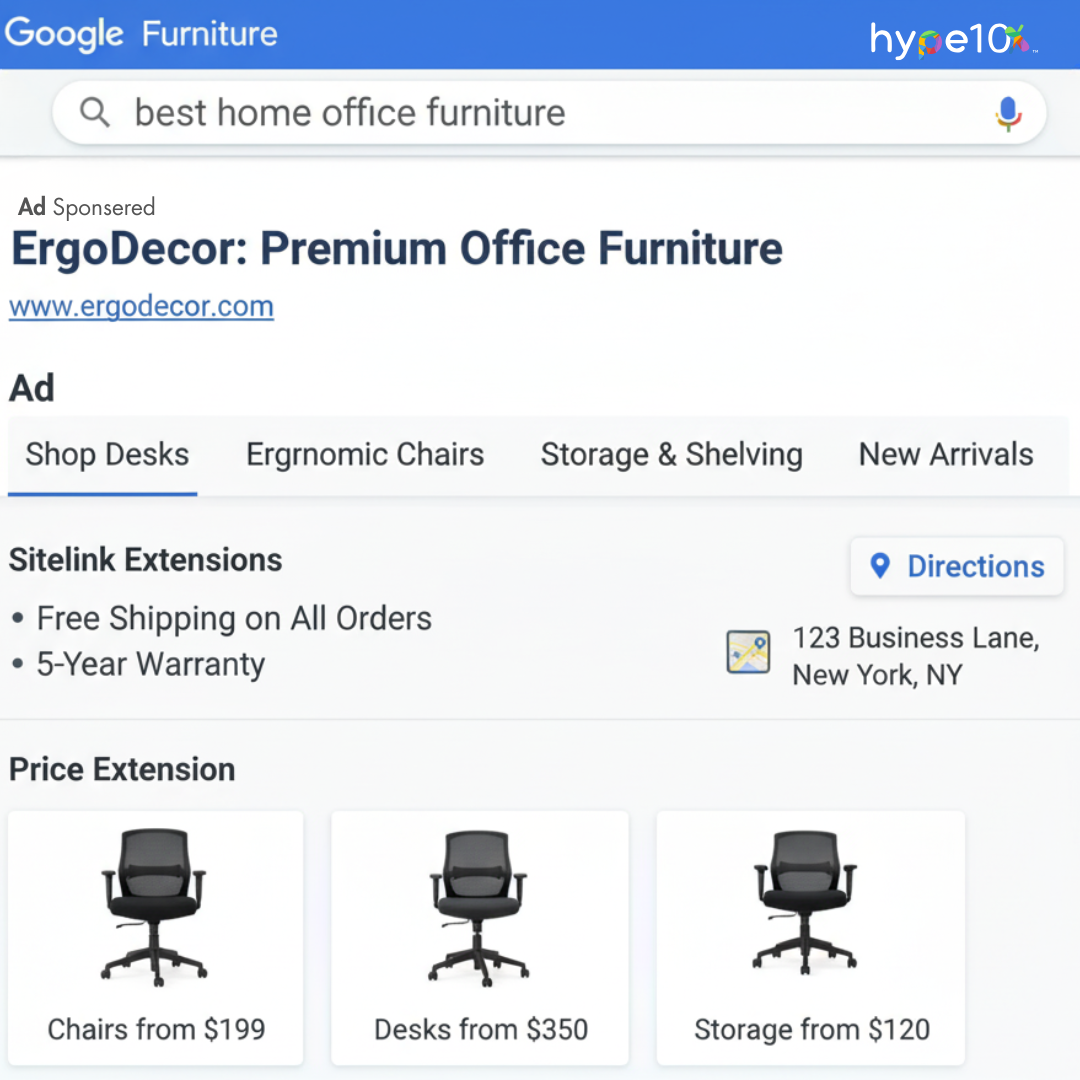
7.Automate Smartly with Bidding Strategies
Smart Bidding can feel like handing over the keys to your ad account, but when done right, it outperforms manual bidding every time. The trick is knowing when to trust the algorithm and when to guide it.
Choose the right strategy: Target ROAS works best when you have clear revenue tracking and want to hit specific return goals. Max Conversions is perfect for lead generation when all conversions are roughly equal in value. Maximize Conversion Value prioritizes higher-value sales if your products have different profit margins. Check out Google’s Smart Bidding strategies guide for detailed breakdowns of each approach.
When to automate vs intervene: Let the algorithm run for at least two weeks without changes—it needs time to learn. You need around 30 conversions per month minimum for Smart Bidding to work effectively. Don’t panic over day-to-day fluctuations. But do step in if your conversion rate suddenly drops or you spot tracking issues.
Data hygiene makes or breaks automation: Garbage data equals garbage bidding. Make sure your conversion tracking fires correctly, exclude internal traffic, and import offline conversions if you’re in B2B or retail. Tag your conversion actions properly so the algorithm knows which matter most. Clean data isn’t exciting, but it’s the difference between Smart Bidding that prints money and Smart Bidding that burns through budget.
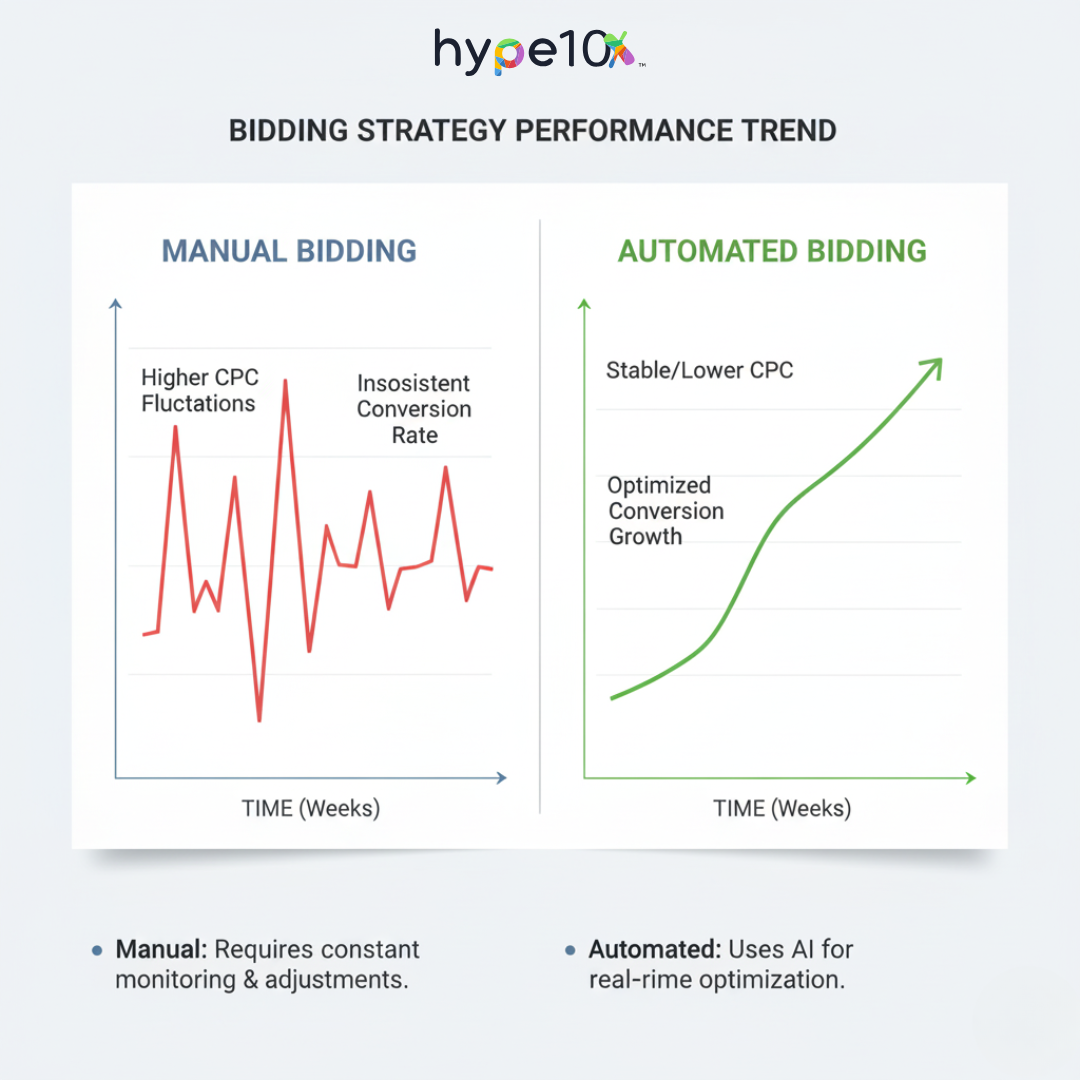
8. Use Conversion Tracking & Offline Data Integration
If you’re not tracking what happens after the click, you’re flying blind. And in 2026, that means connecting the entire customer journey—online and offline.
Enhanced conversions are non-negotiable: Standard conversion tracking only tells you someone filled out a form. Enhanced conversions use hashed first-party data (emails, phone numbers) to track people across devices and sessions. Someone researches on their phone, converts on their laptop—you see the full picture. Set this up through Google Tag Manager, and make sure your CRM is feeding data back to Google Ads.
Link GA4 to Google Ads: This connection is crucial. GA4 shows you what people do on your site after clicking ads—which pages they visit, how long they stay, where they drop off. Import GA4 audiences and conversions directly into Google Ads for smarter targeting and bidding. It takes five minutes to link them and transforms your optimization capabilities.
Real-world offline example: A car dealership runs search ads for test drives. Someone books online, visits the showroom three days later, and buys a $35,000 car. Without offline conversion import, Google thinks that lead was worth maybe $50. Import the actual sale data from your CRM, and suddenly Google’s algorithm knows which clicks generate real revenue. It shifts budget toward keywords and audiences that drive showroom visits, not just form fills. That’s the difference between guessing and knowing.
9. Run Continuous A/B Testing and Creative Refreshes
AI is incredible at optimization, but it can only work with what you give it. Feed it fresh creative regularly, and your performance keeps climbing. Get lazy, and your results plateau.
Testing matters more in an AI world: Google’s algorithms optimize within the boundaries you set. If all your headlines sound the same, the AI can’t find breakthrough combinations. Test different emotional angles—fear versus aspiration, logic versus emotion, price-focused versus value-focused. The algorithm identifies winners faster when you give it real variety to work with.
Use Google Ads Experiments properly: Don’t just guess what works. Set up proper experiments to test ad copy variations, different bidding strategies, or landing page designs. Split your campaign 50/50, let it run for at least two weeks or 100 conversions, and check for statistical significance. Test one variable at a time so you actually know what moved the needle.
Refresh before fatigue hits: Even winning ads lose steam after 60-90 days as audiences see them repeatedly. Watch for declining CTR as your warning sign. Rotate in new headlines, update your offers seasonally, and refresh your image assets quarterly. You don’t need to reinvent everything—sometimes swapping three headlines is enough to spike performance back up.
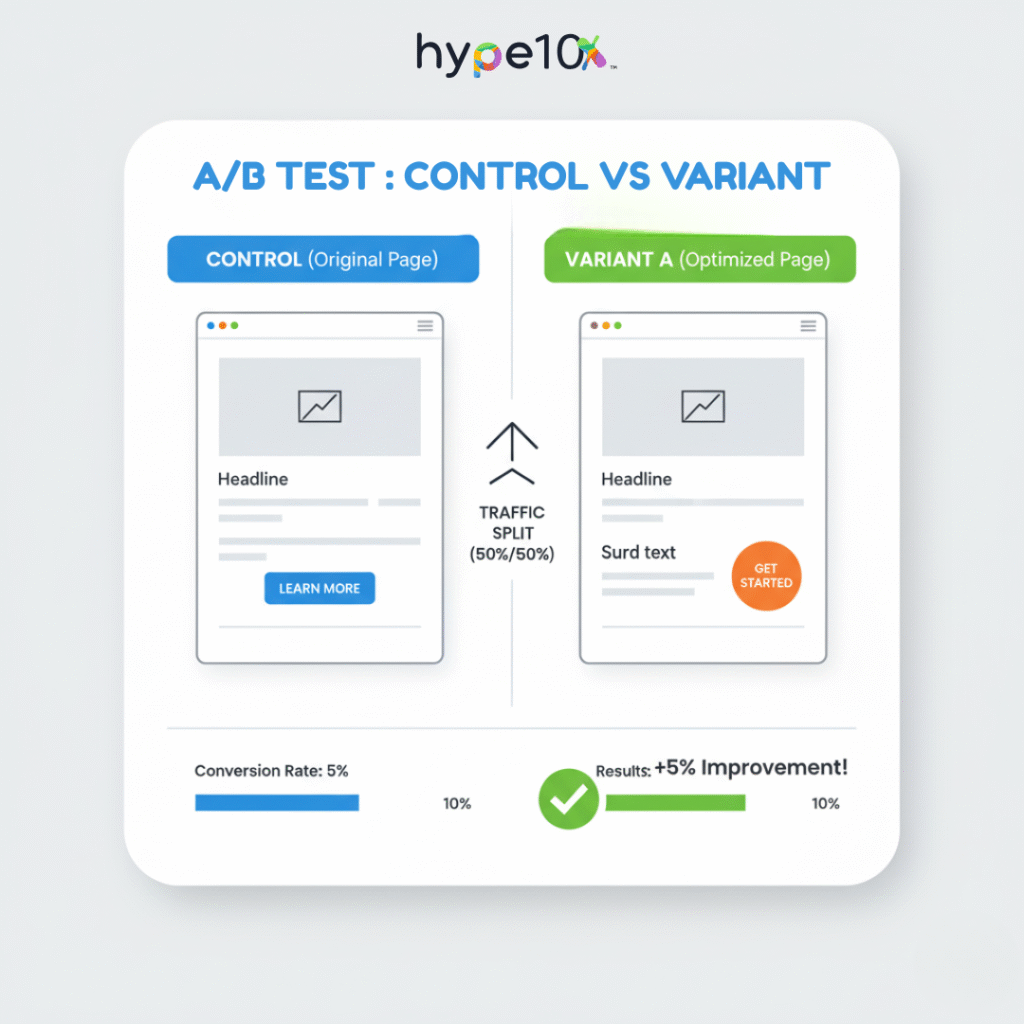
The accounts that win in 2026 are the ones that never stop testing and refreshing.
10. Maintain Rigorous Negative Keyword Management
Voice search and AI-generated queries have exploded in 2026, which means people are searching in wildly unpredictable ways. That’s great for reach, but terrible for your budget if you’re not actively blocking irrelevant traffic.
New search behavior creates new waste: Someone using voice search might ask, “What’s the cheapest way to learn guitar?” when you sell premium guitar lessons. Or AI search assistants phrase queries as full questions instead of short keywords. These conversational searches trigger your ads in ways you never anticipated. If you’re not checking search terms weekly, you’re bleeding money on clicks that’ll never convert.
Search term reports are your goldmine: Pull your search term report every week. Look for patterns in what’s triggering your ads but not converting. Job searches, free alternatives, competitor research, student homework queries—add them all as negatives. One client saved $4,000 monthly just by adding “free,” “DIY,” and “salary” to their negative list.
Build shared negative lists: Create master lists across campaigns for universal wastes like “jobs,” “careers,” “Wikipedia,” “images,” “meme,” and “how to become a.” Apply them account-wide from day one. Then create campaign-specific lists for industry jargon or adjacent products you don’t sell. This layered approach catches 80% of waste automatically while you focus on optimizing what actually matters.
Common Mistakes to Avoid in 2026
Even experienced advertisers fall into these traps. Here’s what’s killing campaigns in 2026 and how to avoid it.
Trusting automation with bad data: The biggest mistake? Turning on Smart Bidding when you’re only getting 10 conversions a month. The algorithm needs volume to learn—minimum 30 conversions monthly, ideally 50+. Without enough data, it flails around wasting budget. And if your conversion tracking is broken or you’re counting junk leads as conversions, automation amplifies those problems at scale. Fix your data foundation first, automate second.
Ignoring what the audience is telling you: Google hands you signals about demographics, devices, locations, and times that work. Then advertisers… do nothing with it. If 70% of conversions happen on mobile between 6-9 PM from people aged 25-34, why are you bidding the same for desktop traffic at 2 AM? Layer in audience segments, adjust bids by performance signals, and actually use the insights tab.
Running stale creative into the ground: Your winning ad from January is tired by April. CTR drops, conversions plateau, and competitors pass you by. Refresh headlines and descriptions every 60-90 days minimum. Swap images quarterly. Test new angles constantly. The accounts crushing it right now treat creative like a living thing that needs constant feeding, not a “set it and forget it” task they touched six months ago.

Conclusion
Google Ads in 2026 isn’t the same game it was two years ago. AI has taken over the heavy lifting, but that doesn’t mean you can just flip on automation and walk away. The advertisers winning right now are the ones feeding that AI with quality data, fresh creative, and smart strategic decisions.
These ten strategies aren’t theoretical—they’re what separates profitable campaigns from budget black holes. Responsive Search Ads with strong variety. Lightning-fast landing pages that actually convert. First-party data that lets you target people who matter. Relentless testing and optimization. It all compounds.
The early movers always win. While your competitors are still running 2024 playbooks, you can be capturing market share with strategies built for how people actually search today. Better targeting means lower costs. Better creative means higher conversions. It’s simple math that adds up to serious ROI.
Ready to modernize your Google Ads strategy? We help businesses cut wasted spend and scale what’s working. Book a free consultation to see where your campaigns are leaving money on the table—and how to fix it. Let’s turn your ad budget into predictable revenue.
